20 Celtic Symbols: Ancient Irish and Druid Meanings
An exploration of 20 common and lesser-known Celtic symbols. Learn about their meaning and their origins.
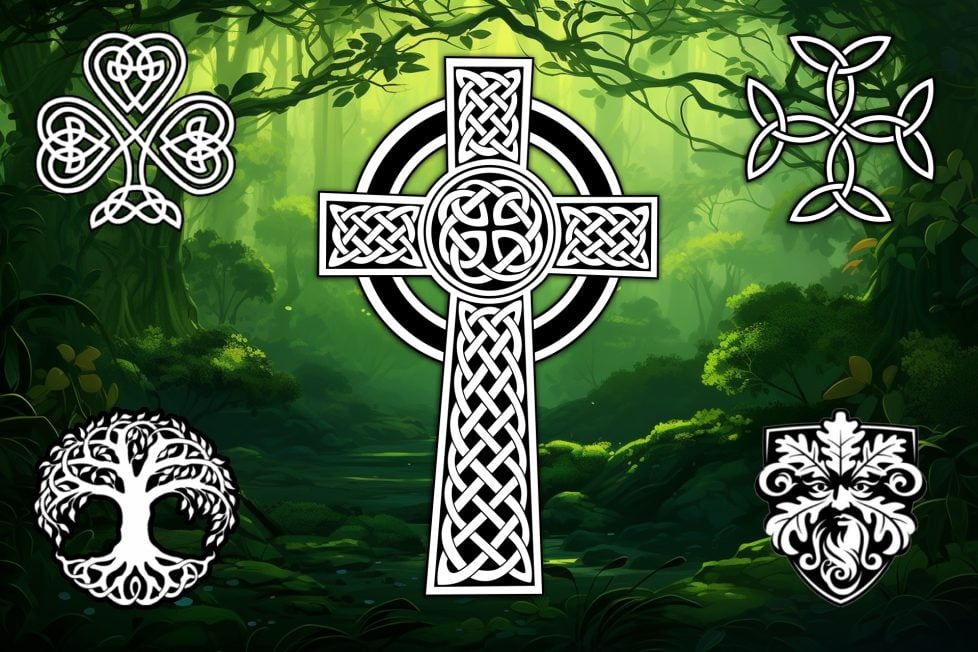
An exploration of 20 common and lesser-known Celtic symbols. Learn about their meaning and their origins.

Table of Contents
ToggleThe Celts are thought to have originated in parts of Northern Europe, they first arrived in Ireland around 500 BC. The ancient Celts had a profound connection to nature and spirituality. This bond influenced their artistry, as they used patterns and symbolic motifs to express their beliefs.
The symbols of a culture are like a window into its past. They are visual reflections of ancient beliefs and practices. In this article, we will examine 20 different symbols associated with Celtic culture. We’ll look at their origins, meanings, and the stories behind them.
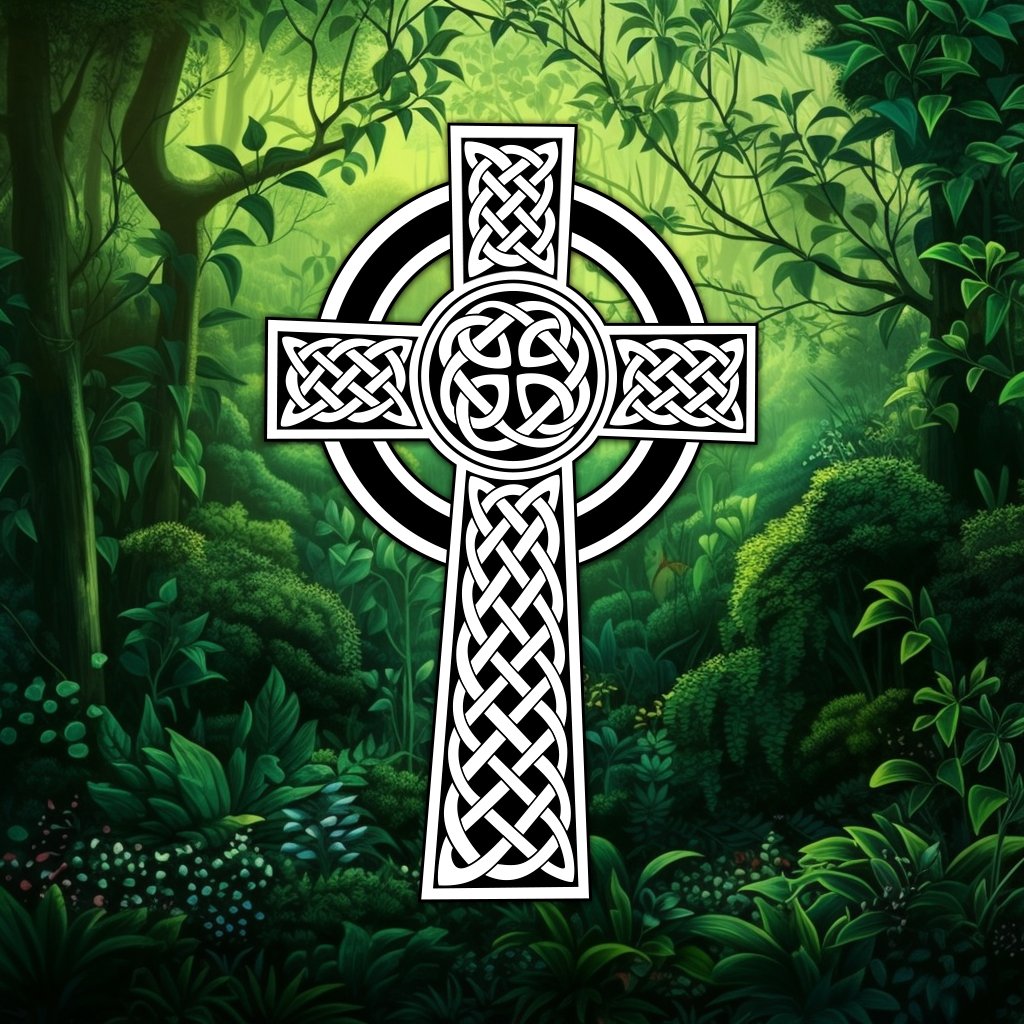
The Celtic Cross is a symbol that tells a tale of two cultures. Christianity greatly influenced Celtic symbols, and the Celtic Cross is a prime example. This unique emblem fuses the Christian cross with the pagan sun wheel, symbolizing both Christ’s crucifixion and the life-giving power of the sun.
The symbol first emerged in Ireland during the Early Middle Ages. According to a popular Irish legend, Saint Patrick introduced the Celtic cross. This was to help pagan followers understand the cross’s importance. It gained popularity through its use in the stone high crosses erected across the islands, primarily in regions evangelized by Irish missionaries.
The Celtic Cross made a comeback during the 19th century as part of the Celtic Revival movement. This movement aimed to promote and preserve Celtic culture.
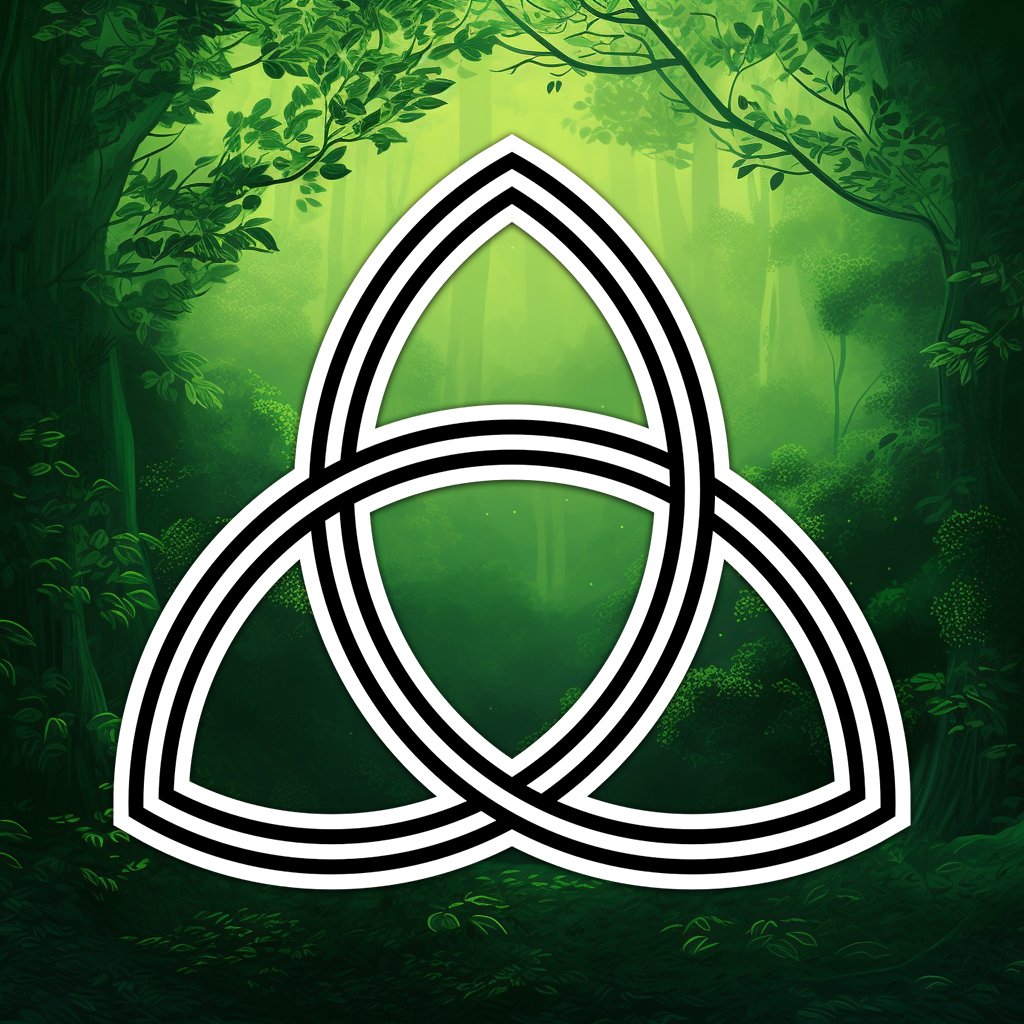
The Triquetra is a centuries old Celtic symbol. It beautifully symbolizes eternity and interconnectedness. Its design consists of three-pointed loops drawn in a triangular shape, with each point corresponding to a corner of the triangle.
The Triquetra embodies several triads within Celtic cosmology and theology. For instance, it represents the division of the world into the realms of Land, Sea, and Sky. It also stands as a symbol of Celtic triple goddesses, such as The Morrigan, the goddess of battle and strife.
The Triquetra also signifies the trinity of life, death, and rebirth. This theme echoes through many Celtic symbols and reflects the Celts’ deep spiritual connection with the natural world.
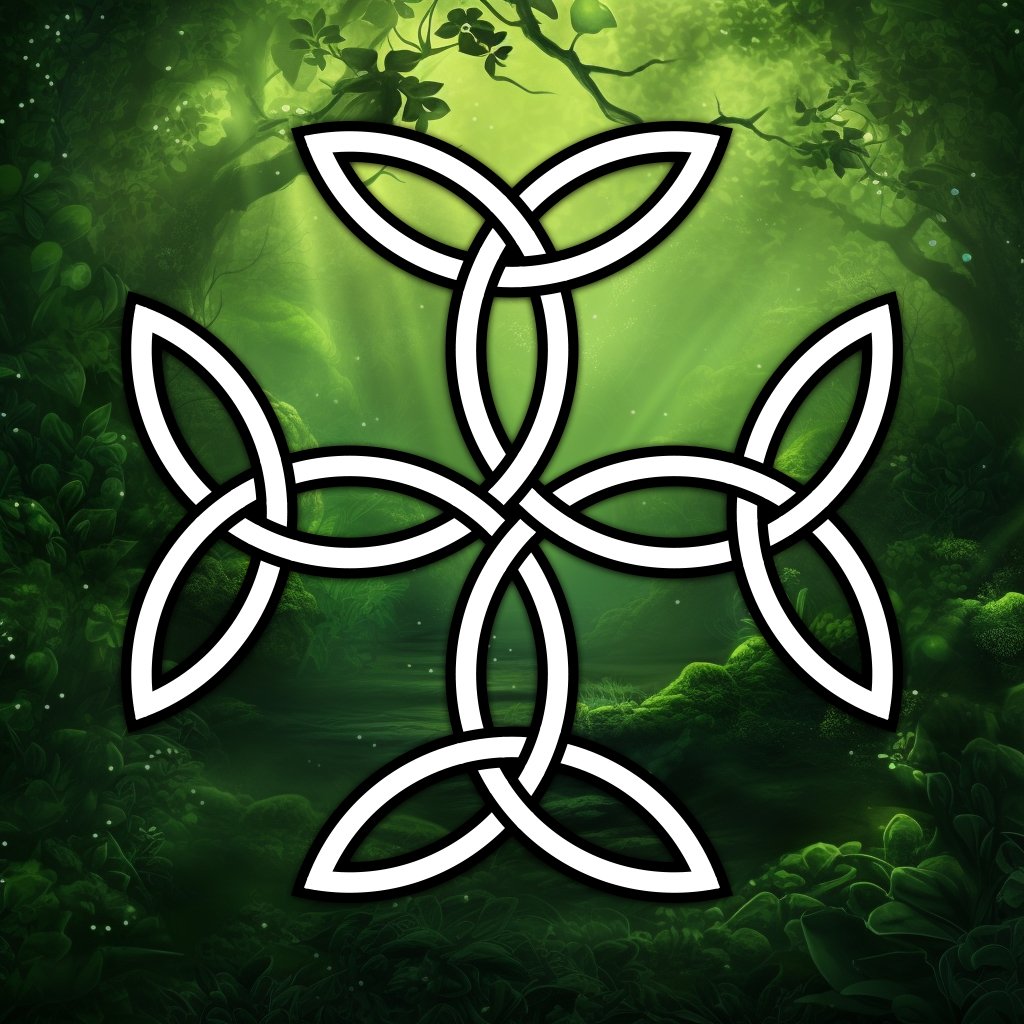
The Carolingian Cross, also known as the Cross of Triquetras, is an intricate symbol composed of four triquetras. Each of these is an interlocking loop forming a three-pointed shape.
The Carolingian Cross is a christian symbol representing Christ’s sacrifice and resurrection, combined with the pagan concept of the tree of life. The Carolingian Cross also has a temporal aspect, representing the past, present, and future, all intricately wound together.
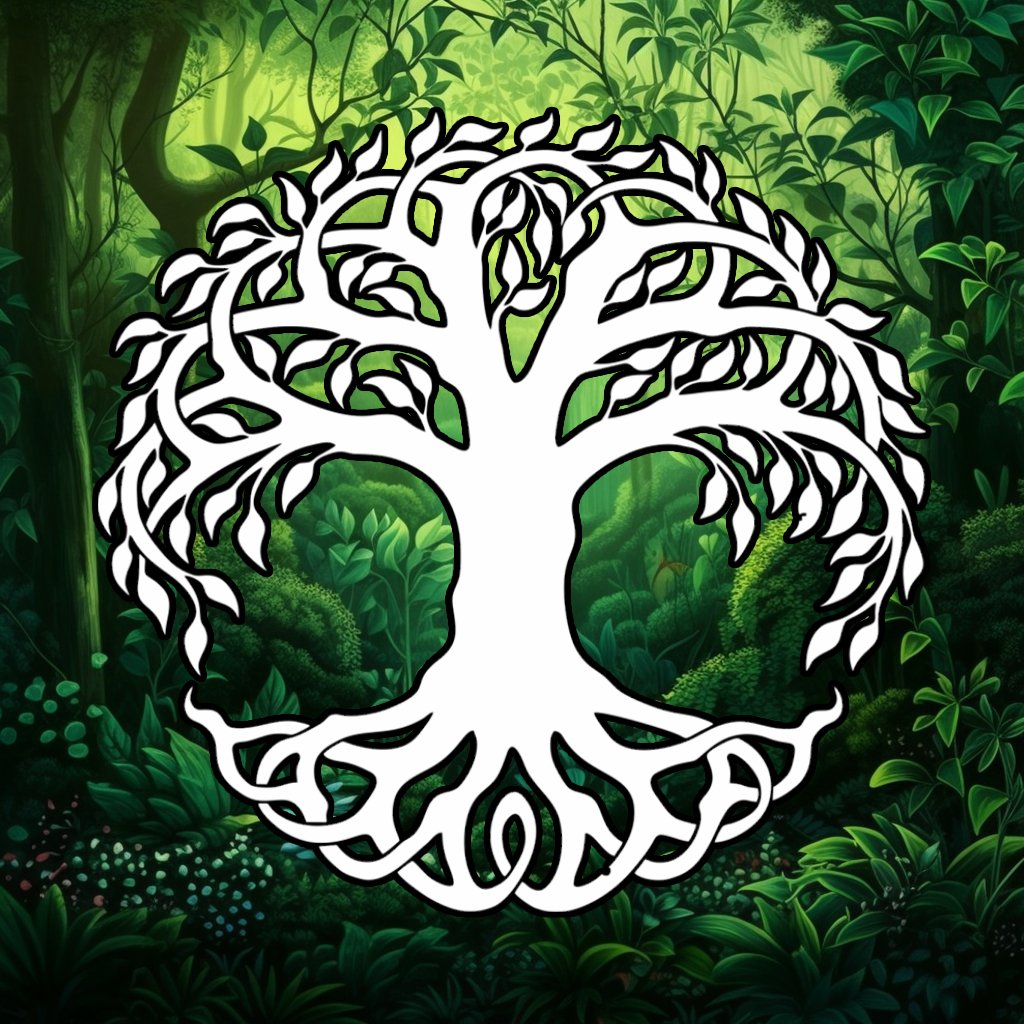
The Celtic Tree of Life, or Crann Bethadh, is a symbol of resilience. It signifies how the forces of nature come together to maintain balance in the universe. The symbol embodies strength, wisdom, and endurance, just like a tree that grows tall and strong, adapting to the changing seasons.
Beyond representing strength and growth, the Celtic Tree of Life also symbolizes the three stages of life: birth, death, and rebirth. This cycle mirrors the changing seasons, as the tree sheds its leaves in autumn, becomes dormant in winter, and sprouts new leaves in spring.
The symbol is often associated with the mighty oak tree, sacred to the Celts and believed to house their gods and ancestors. It was customary to plant a tree, known as Crann Bethadh, in the middle of a new settlement in Ireland.
The Celtic Tree of Life represents strength, wisdom, and resilience in facing life’s challenges.
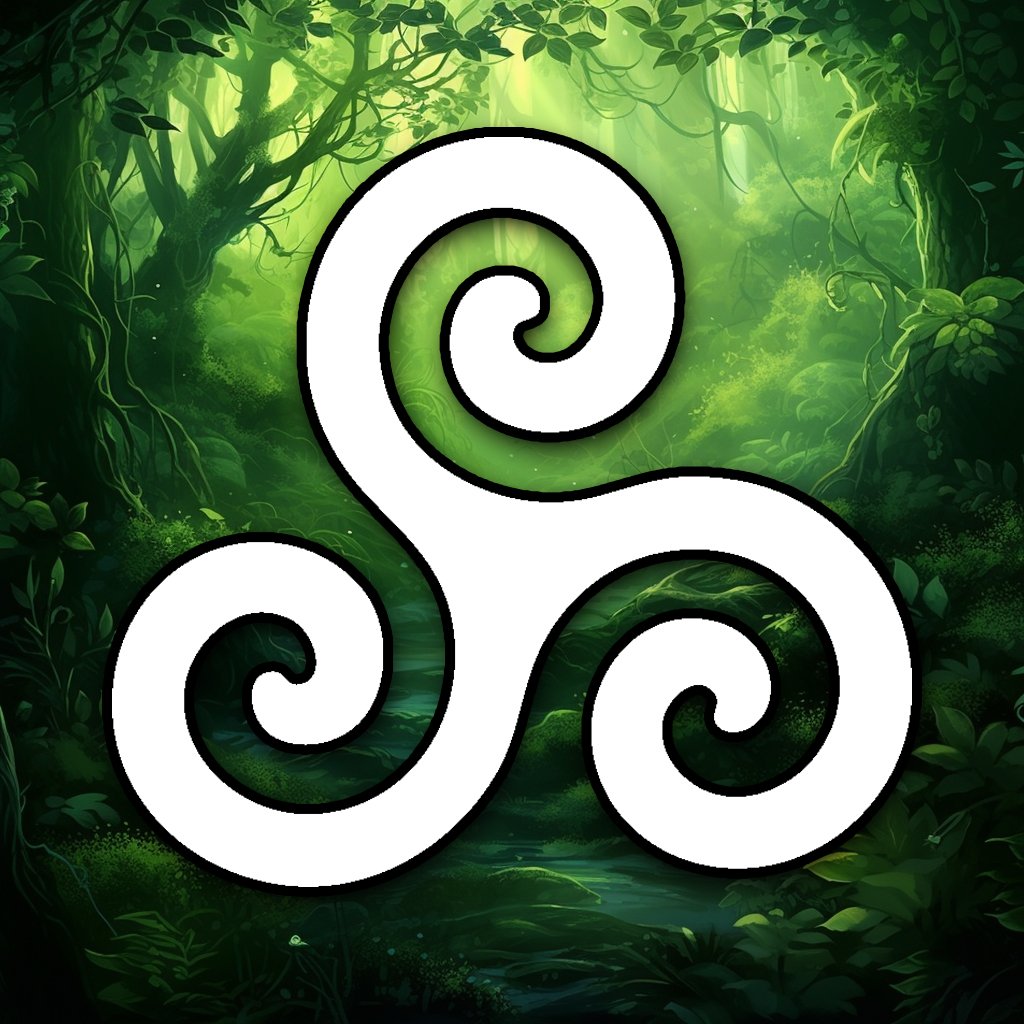
The Triskelion, also known as the Celtic Spiral, is a symbol made up of three interconnected spirals. Although the Triskele wasn’t invented by the Celts — it predates their arrival in Ireland by over 2,500 years — it became a significant part of their symbolic language.
The Triskelion represents the Celts’ belief that everything happens in threes, or “the third time’s the charm.” It symbolizes the three worlds: the celestial, physical, and spiritual. It also represents the stages of the life cycle: birth, life, death, signifying the cyclical nature of existence.
In a different interpretation, the Triskelion symbolizes the dynamic elements: water, air, and fire, with the earth as its center. It’s also seen as a representation of time, flowing through the past, present, and future.
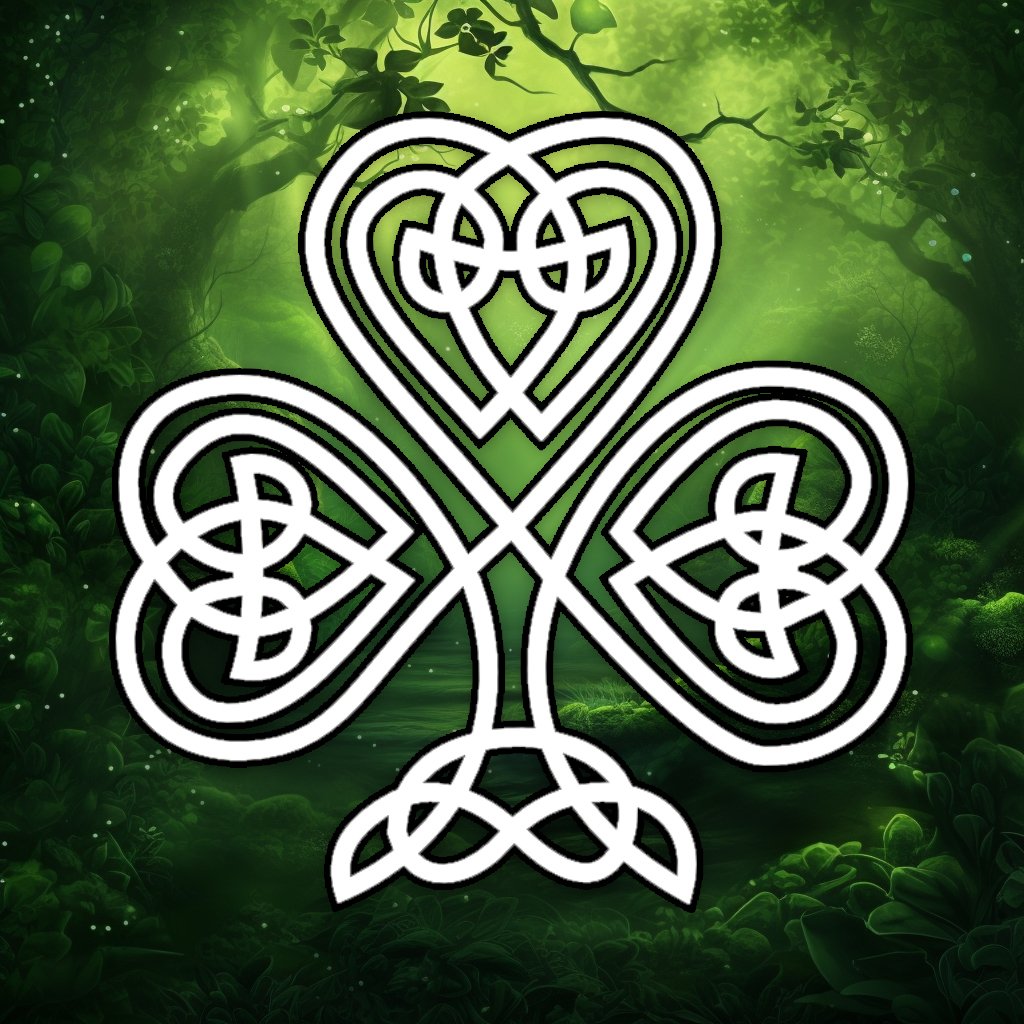
The Shamrock, a three-leaved clover native to Ireland, is a revered symbol in Celtic culture. Known as “seamróg” in Irish, the Shamrock was a sacred plant to the Druids — ancient Celtic priests.
The Druids believed the number three had mystical power. They thought the Shamrock could ward off evil spirits. This belief in the power of three was prevalent in many aspects of Celtic culture and spirituality.
In the 5th century, St. Patrick brought Christianity to Ireland and used the Shamrock to explain the concept of the Holy Trinity (the Father, the Son, and the Holy Spirit) to the pagan Celts. This association with St. Patrick and Celtic heritage made the Shamrock a symbol of Irish culture and a part of their national identity.
The Shamrock’s triad also represents ideals like faith, love, and hope.
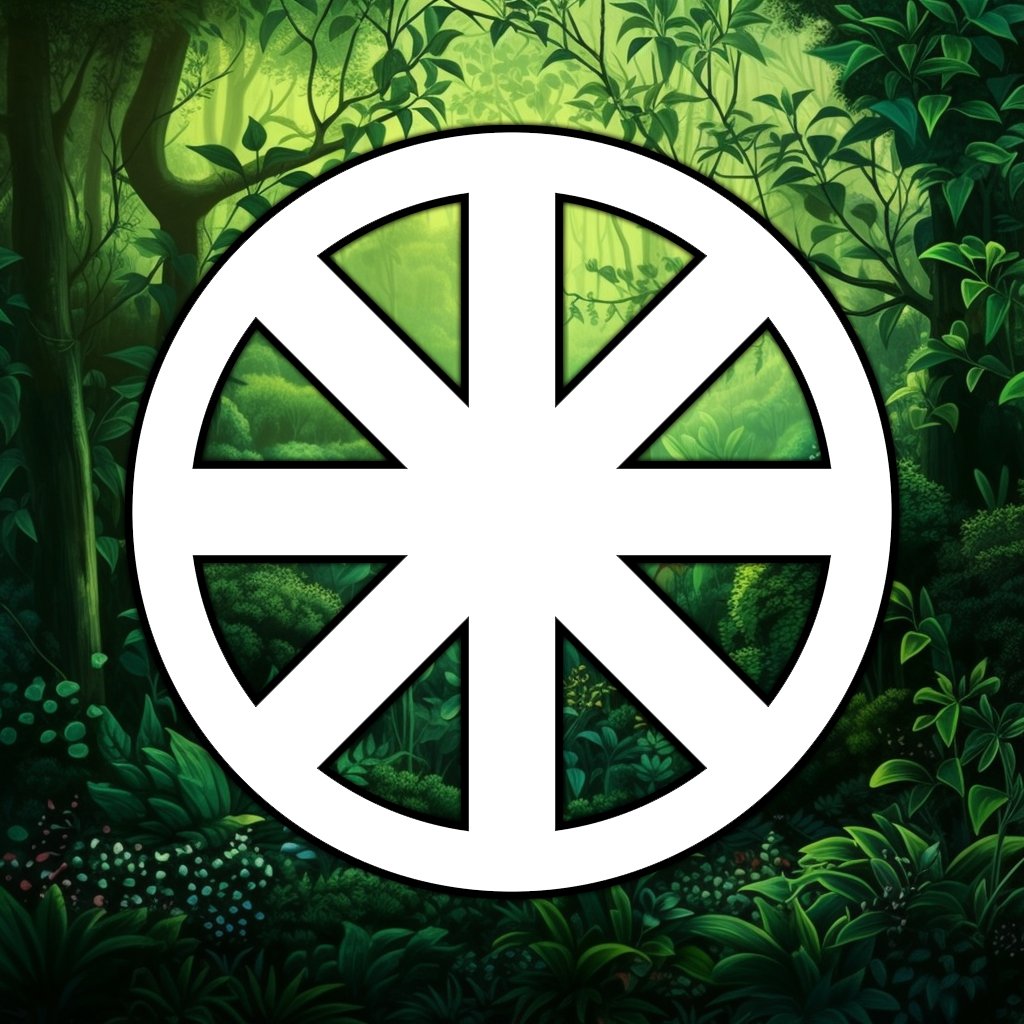
The Wheel of Taranis is an important symbol in historical Celtic polytheism. It’s a chariot wheel with six or eight spokes, associated with the god Taranis. He was known as the wheel-god, identified as the sky, sun, or thunder god.
This wheel is a classic Druid symbol. The hub of the wheel signifies the center of the universe. The Wheel of Taranis symbolizes the cyclical nature of life, the universe and the concept of eternal return, reflecting the Celts’ deep respect for the natural world and its cycles.
Some people choose to wear the Wheel of Taranis as an amulet. It is believed to be a defensive measure against evil or harm.
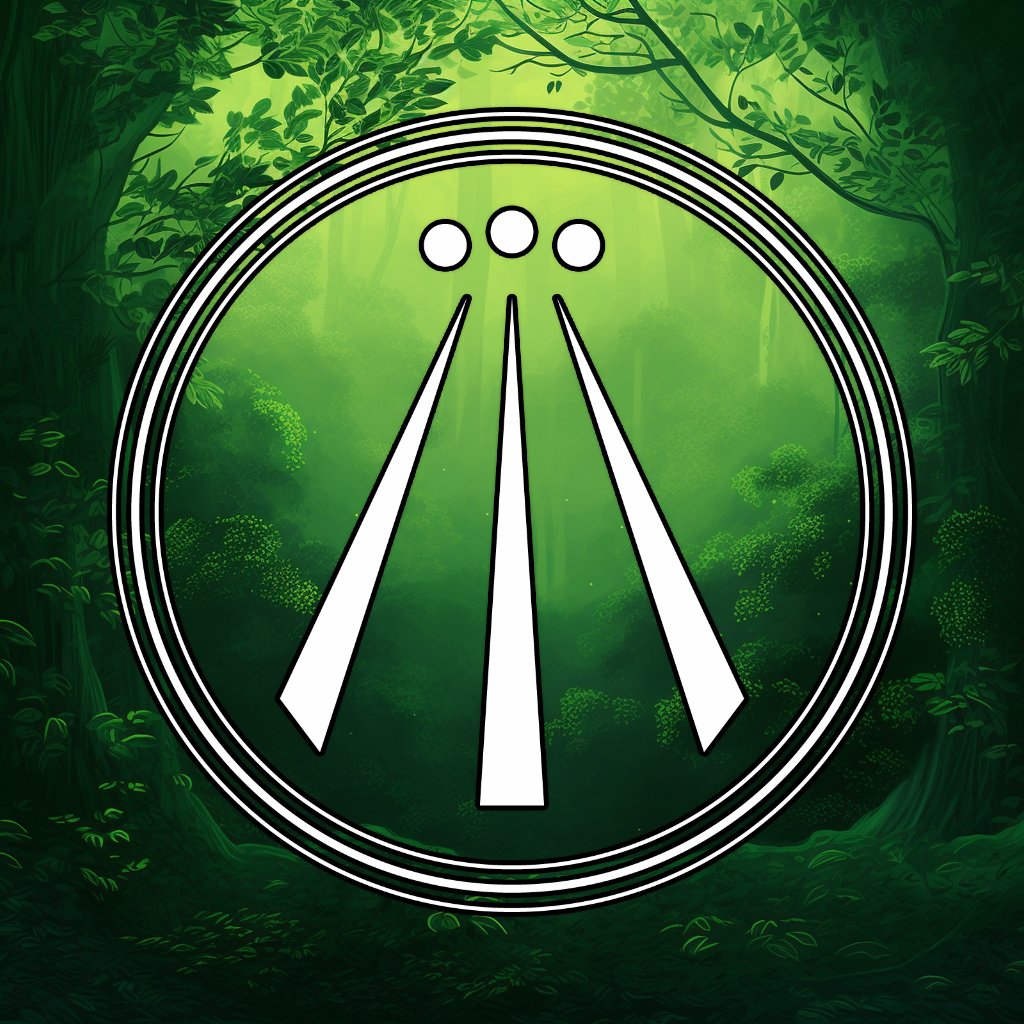
Awen, a word from Welsh, Cornish, and Breton, translates to “inspiration,” typically of the poetic kind. It was a symbol of inspiration and creativity in Celtic culture, often associated with dreams and artistic prowess.
Celtic society attributed the skills of artists and creative writers to Awen, seen as a muse-like figure that appeared in dreams. Modern Druidic groups and individuals interpret Awen in various ways, but its essence remains the same: it’s a source of divine inspiration.
The Awen symbol features three rays of light representing different aspects of the divine or the natural world — earth, sea, air — body, mind, spirit — love, wisdom, truth.
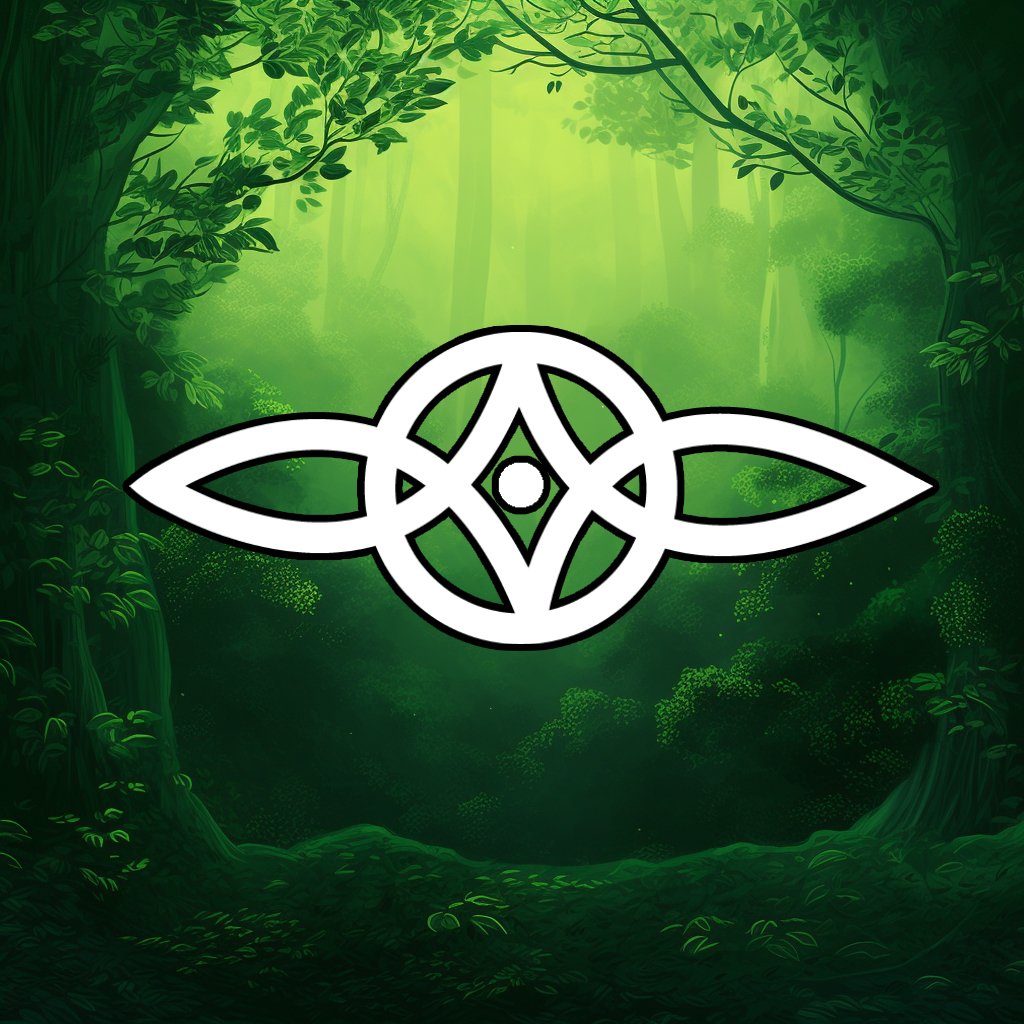
The Serch Bythol is a symbol of love, loyalty, and friendship. This traditional Welsh symbol has a heart-warming meaning. Serch Bythol translates to “everlasting/eternal love” in Welsh. It represents a bond that can never be broken.
The symbol itself is made from two triskeles. These are symbols with three legs or lines radiating from a center point. The two triskeles in the Serch Bythol represent two people who are joined forever in body, mind, and spirit.
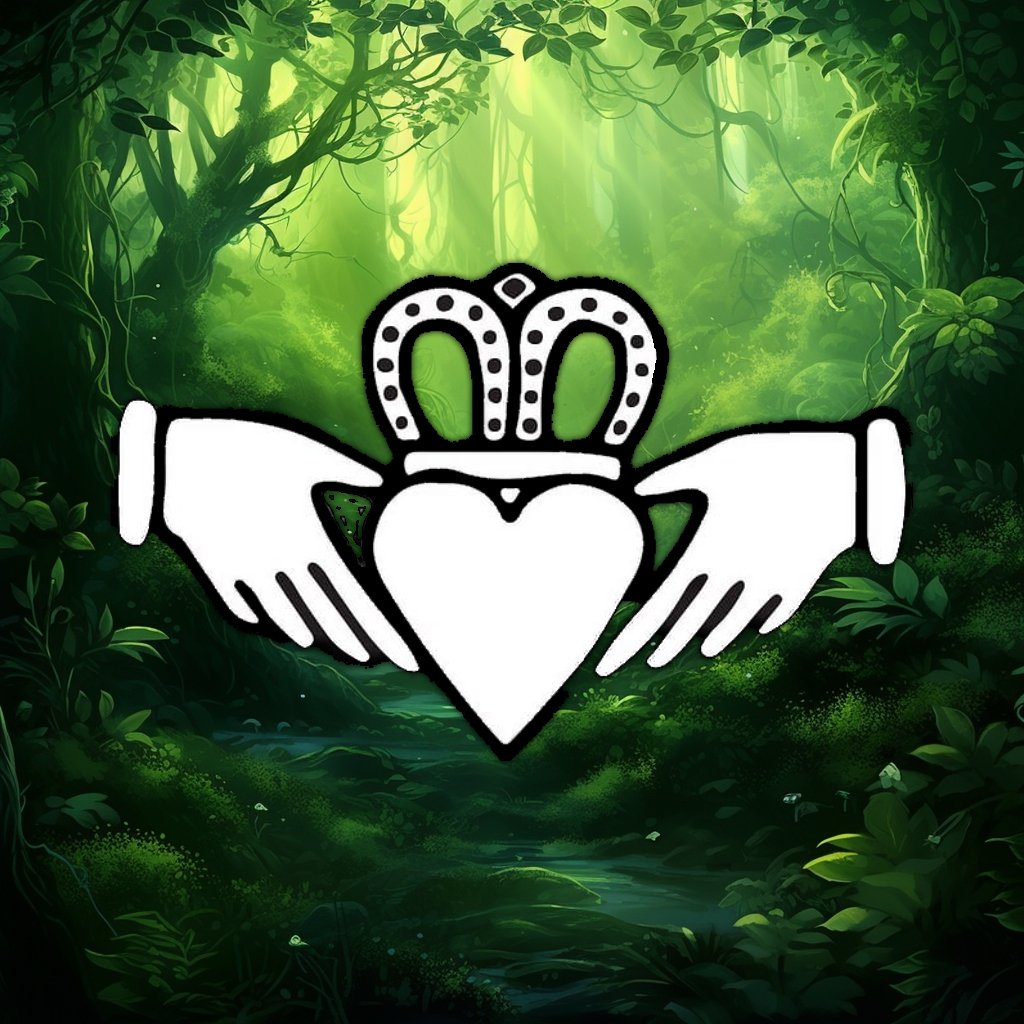
The Claddagh ring is not a Celtic symbol, but has become part of a popular Irish tradition that represents love, loyalty, and friendship. Originating in the 17th century in the fishing village of Claddagh, near Galway City, the ring features a heart for love, a crown for loyalty, and two hands for friendship.
The Claddagh ring has a unique way of being worn to signify one’s relationship status. If single, wear it on the right hand with the heart facing outward from your body. This shows you are open to love. If in a relationship, wear it on the right hand with the heart facing inwards. This indicates that you have given your heart to someone. During engagement, it is worn on the left hand with the heart pointing outwards, signifying commitment to marry your partner. Once married, the ring is worn on the left hand with the heart pointing inwards, showing loyalty to your spouse.
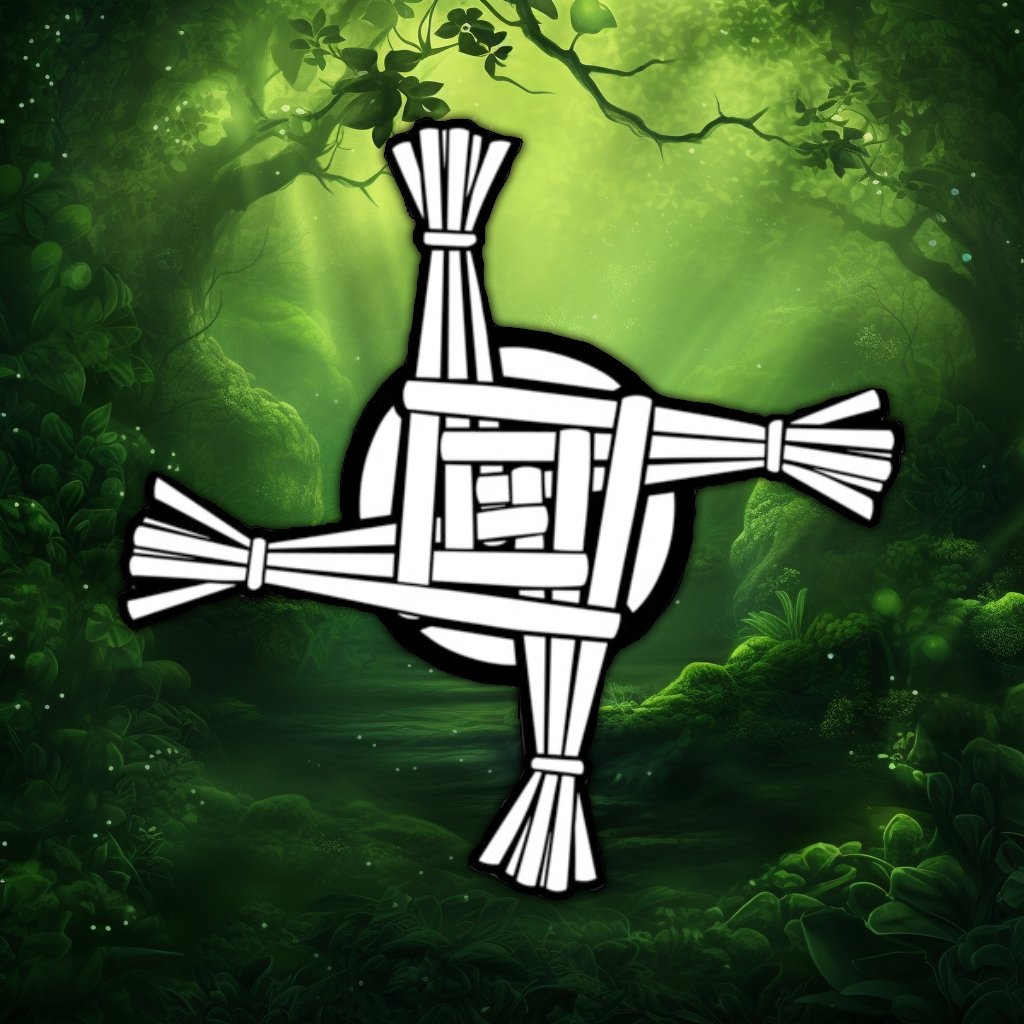
Brigid’s Cross, presents the blend of pagan and Christian beliefs within Irish culture. Originally, it was associated with the goddess Brigid. In Celtic mythology, Brigid of the Tuatha de Danaan was a life-giving goddess associated with the onset of spring, creativity, wisdom, healing, and poetry. She also had a connection with fire, representing both its productive uses and destructive power.
When Christianity arrived in Ireland, Brigid transformed from a pagan goddess to Saint Brigid of Kildare. Brigid’s Crosses, intricately woven from rushes or straw, continued to adorn the doors and rafters of Irish homes, often in the kitchen, warding off fire and evil. Placing a Saint Brigid’s Cross above a home’s entrance is believed to protect the household from harm.
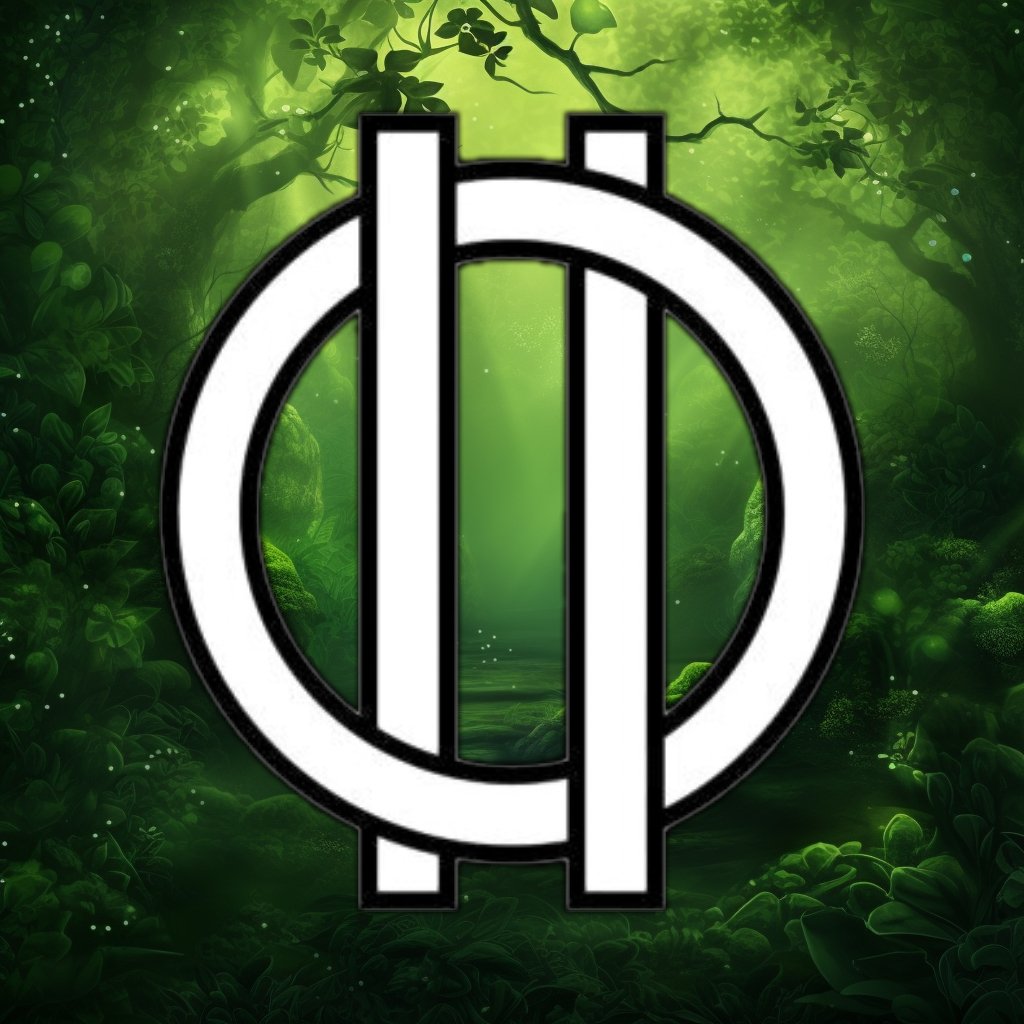
The Druid Sigil, a circle intersected by two vertical lines, is the symbol of the Reformed Druids of North America, formed in 1963. Reformed Druid worship is directed towards Nature, drawing inspiration from Celtic paganism.
The meaning of the Druid Sigil isn’t officially codified, but many interpret it as representing the balance between male and female, or the three realms of land, sea, and sky. This symbol reflects the Druids’ deep reverence for nature and their belief in maintaining a balance between different elements of life.
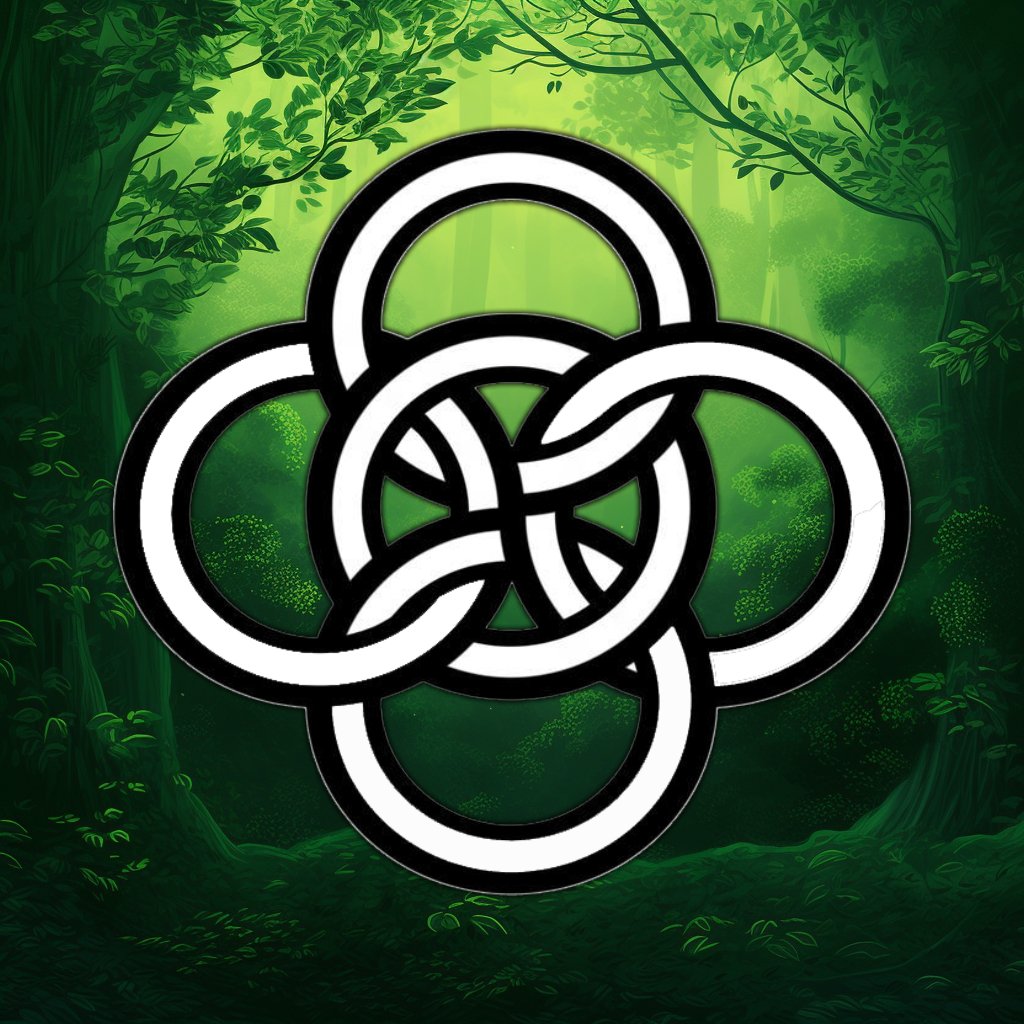
The Celtic five-fold symbol consists of five rings, with a central ring surrounded by four others. Each circle has profound spiritual significance. Linked with the Tuatha De Danann, or the children of the Irish goddess Danu, the central circle represents Danu while the surrounding rings stand for her offspring: Nuada, Lugh, Dagda, and Fal. These deities bestowed gifts upon the Celts, such as the sword, spear, cauldron, stone, and cord.
The five-fold symbol also serves as a beacon for enlightenment. Druid beliefs emphasize that meditating upon this symbol leads to heightened awareness and understanding. Through this meditative process, the five aspects of nature merge with human consciousness.
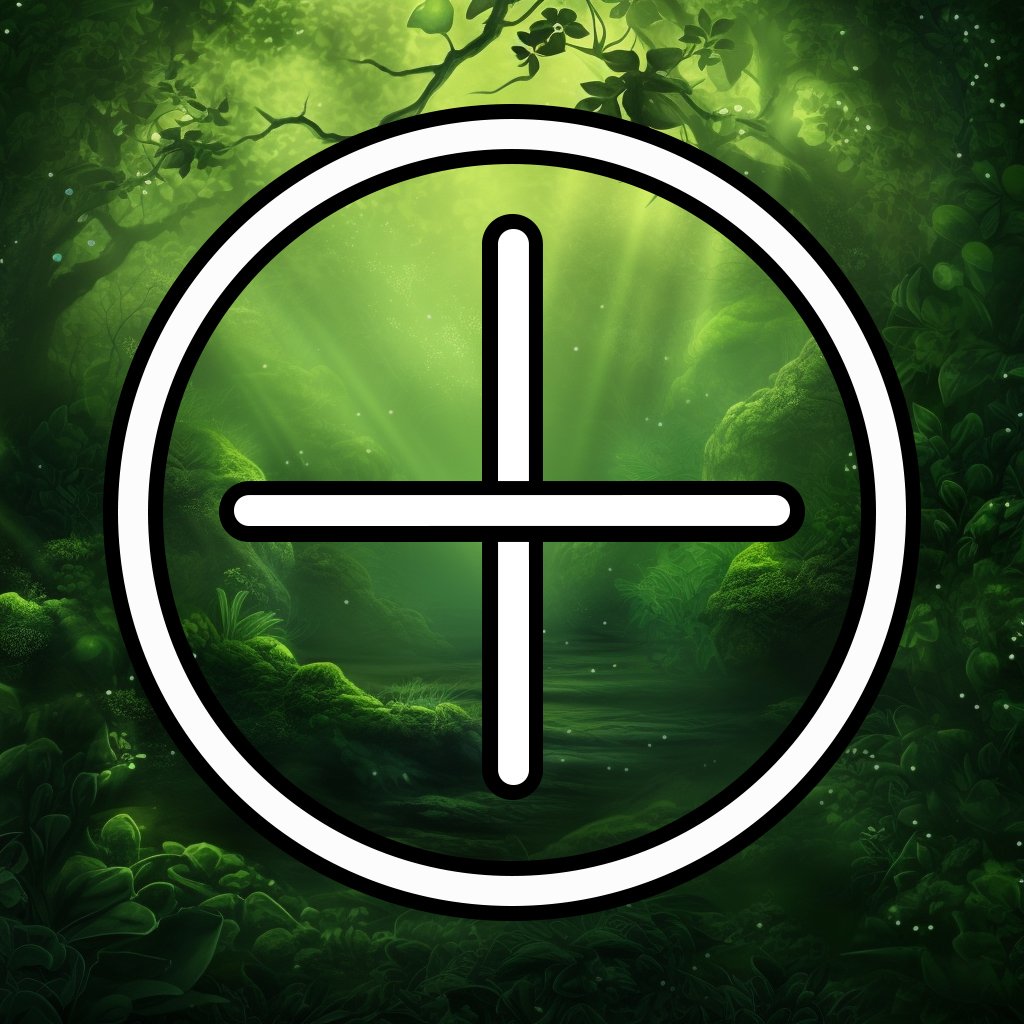
The Ailm, a symbol resembling a cross or a plus sign, sometimes encircled, is one of the letters of the Ogham alphabet, which the ancient Celts used to write their language. Representing the letter A, the Ailm is often linked to the pine, fir, or sometimes the elm tree.
In Celtic symbolism, the Ailm represents the spreading of light, allowing us to see clearly in the dark. It signifies foresight and planning to discern the path forward. The Ailm symbolizes a spiritual journey, embodying not only physical strength but also spiritual and mental resilience. The conifer or silver fir trees, associated with the Ailm, were once believed to have the power to heal our spirit or inner soul.
The Ailm is also a symbol of connection to the divine. The silver fir tree was sacred to the Druids, the priests and teachers of the Celts. They utilized its branches for rituals and ceremonies. The Ailm serves as a bridge to our inner wisdom and spiritual guidance, reminding us of a deep-rooted connection between nature and the divine.
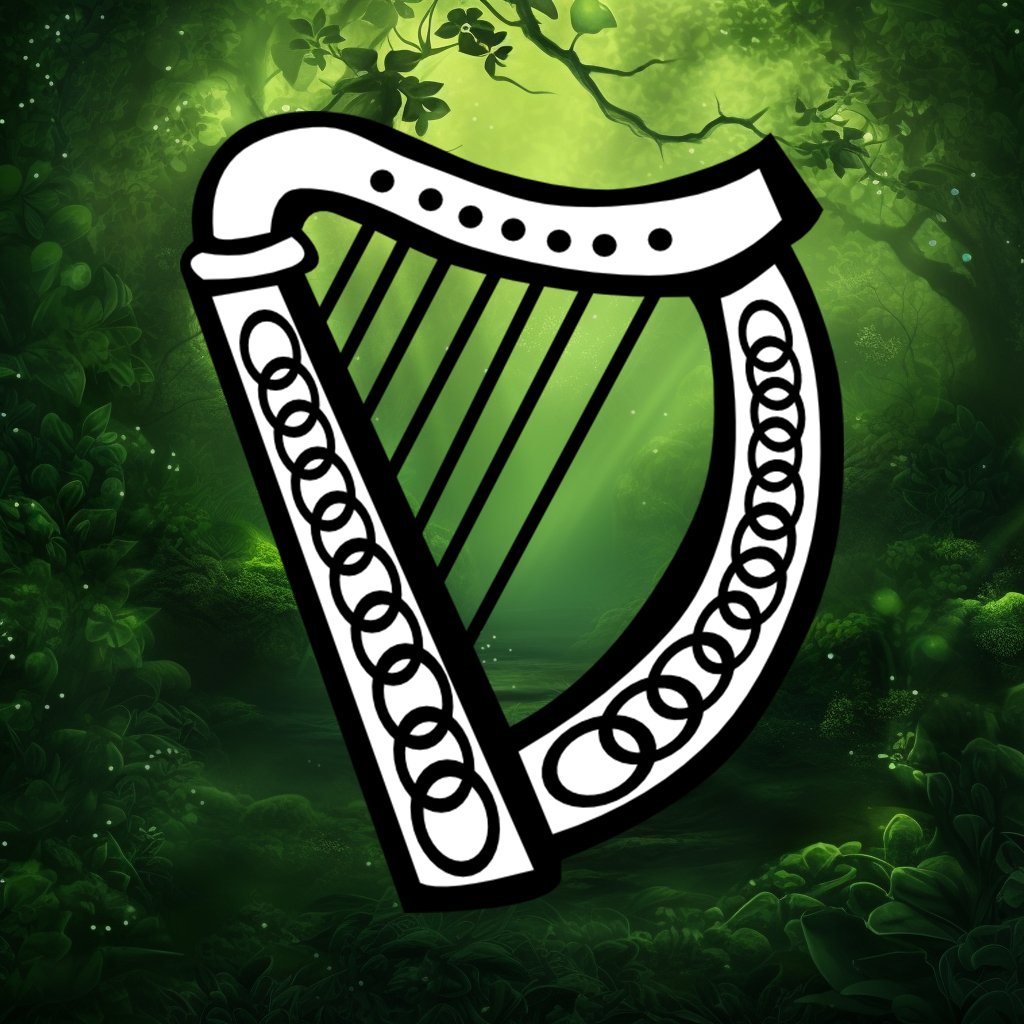
The Celtic Harp became a symbol of Ireland when the Kingdom of Ireland was established in 1541 with Henry VIII becoming its king. A famous example of a Celtic Harp is the Brian Boru Harp held at Trinity College. The symbol of the harp is thought to represent royalty and the immortality of the soul.
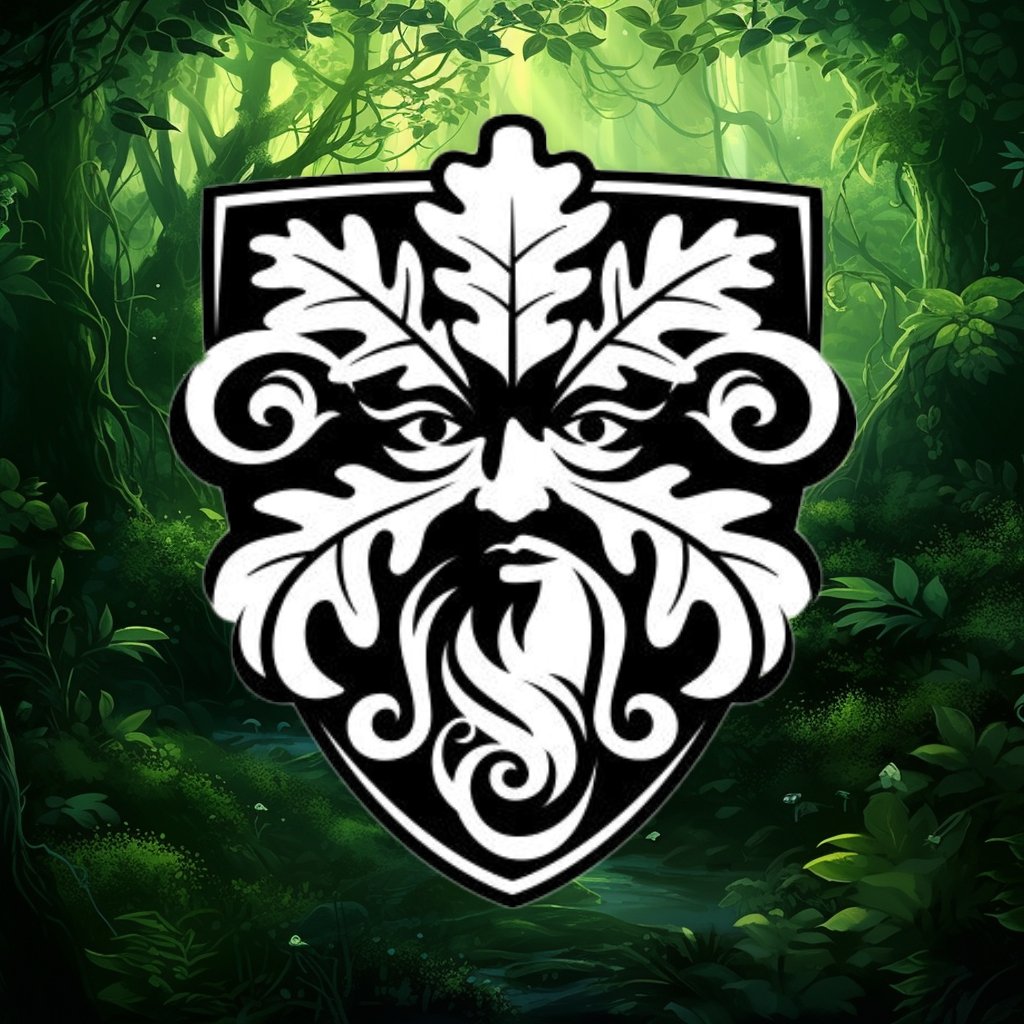
The Green Man is another vital Celtic symbol — it is a symbol of rebirth, the fertility of the land, and the arrival of spring and summer. It also represents the strong bond between nature and humanity. The Green Man is a motif depicted as a head made of leaves. The imagery of a green man can be found on many churches and other buildings in Ireland and Britain.
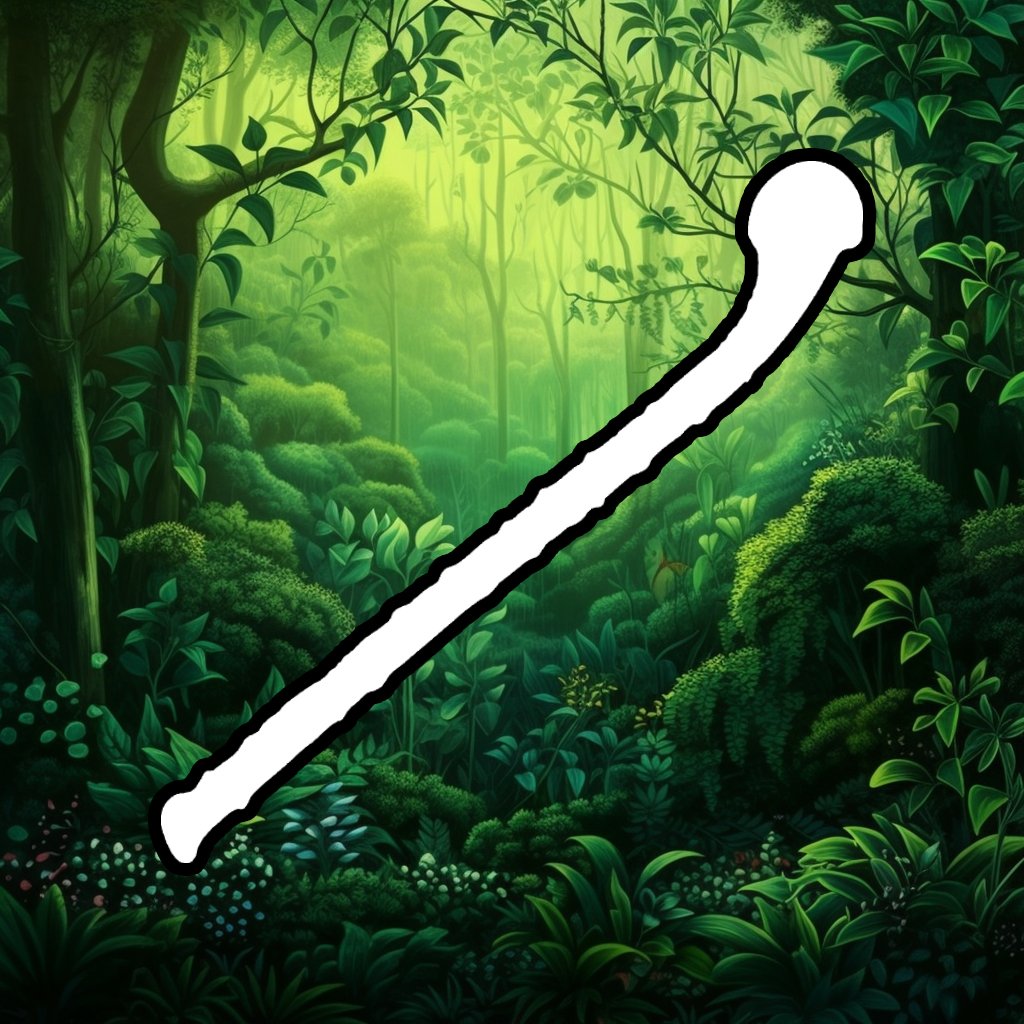
The Shillelagh embodies the spirit of the Irish people: their strength, their resilience, and their fight for freedom.
Shillelaghs are Irish walking sticks or clubs. They are made from the sturdy branches of trees. They are shaped into a heavy end with varying lengths of handle. In the past, these clubs had a use in warfare. Irish rebels used Shillelaghs as weapons against the British. This use of the stick made it a symbol of Irish resistance and independence.
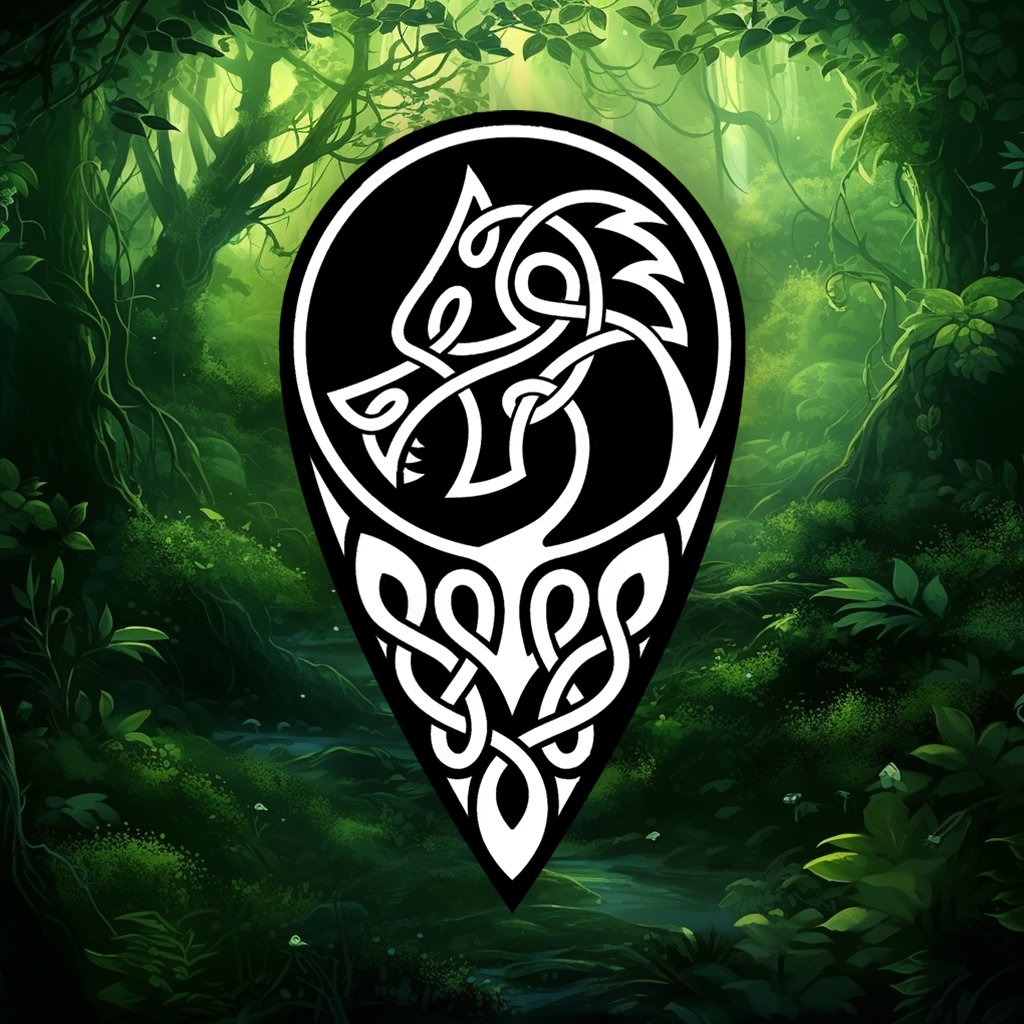
The dragon in Celtic mythology stands for power, strength, and magic. Celts believed dragons came from a world parallel to ours. Dragons were thought to have a strong bond with both the universe and the earthly realm. They were revered and respected for this connection.
Celtic dragons were believed to guard treasures. They were seen as bringers of good luck to those who respected them. Thus, the dragon was a symbol of power, wisdom, and fortune in ancient Celtic culture. It embodies the awe and wonder that the ancient Celts had for the mysteries of the universe.
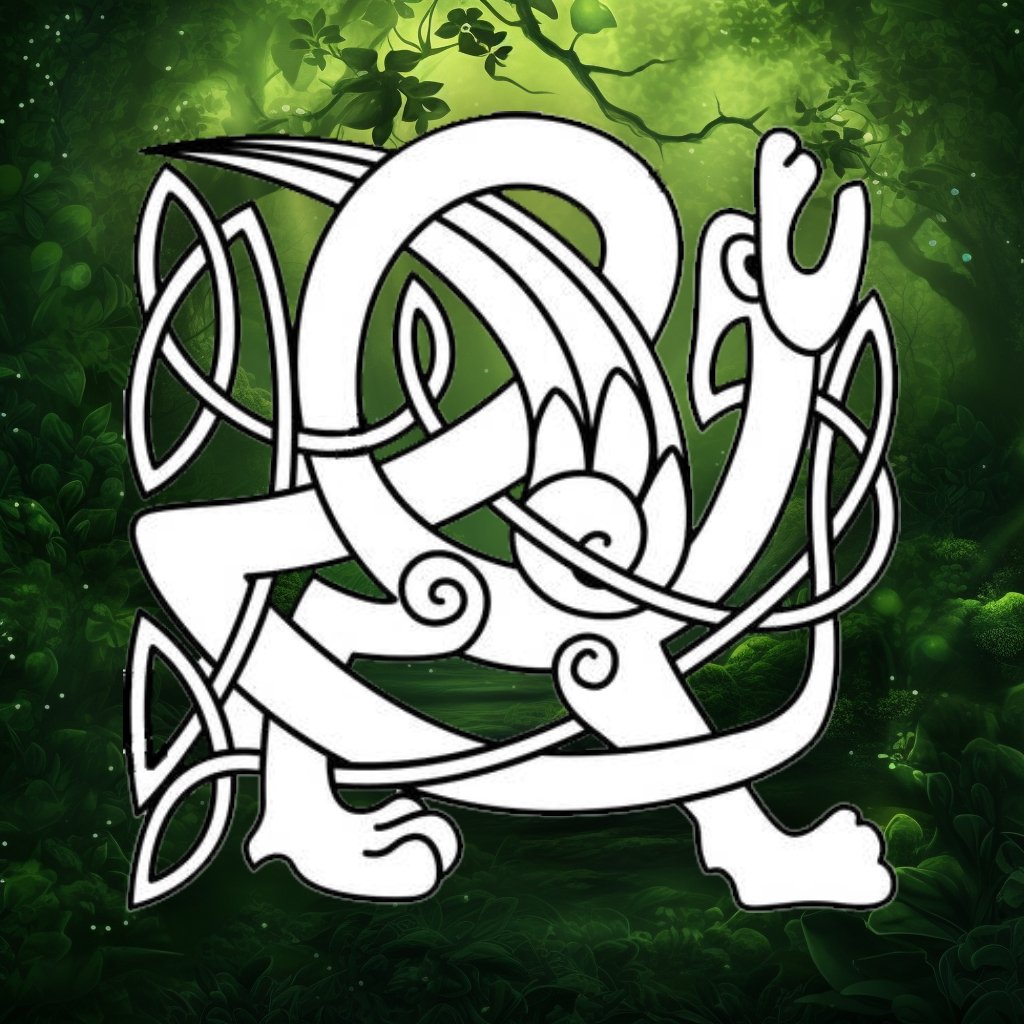
The Celtic Griffin is a mythical creature. It has the head and wings of an eagle and the body and tail of a lion. This creature is a symbol of strength, ferocity, balance, protection, and divine power. It represents the balance between light and darkness.
The Griffin can be seen as a protector in the journey into the afterlife. It is a symbol of protection, both in life and in death. The Griffin’s dual nature, being part lion and part eagle, represents balance. It symbolizes the blend of earth and sky, body and spirit. The Griffin is also a symbol of strength and protection in the face of life’s challenges.
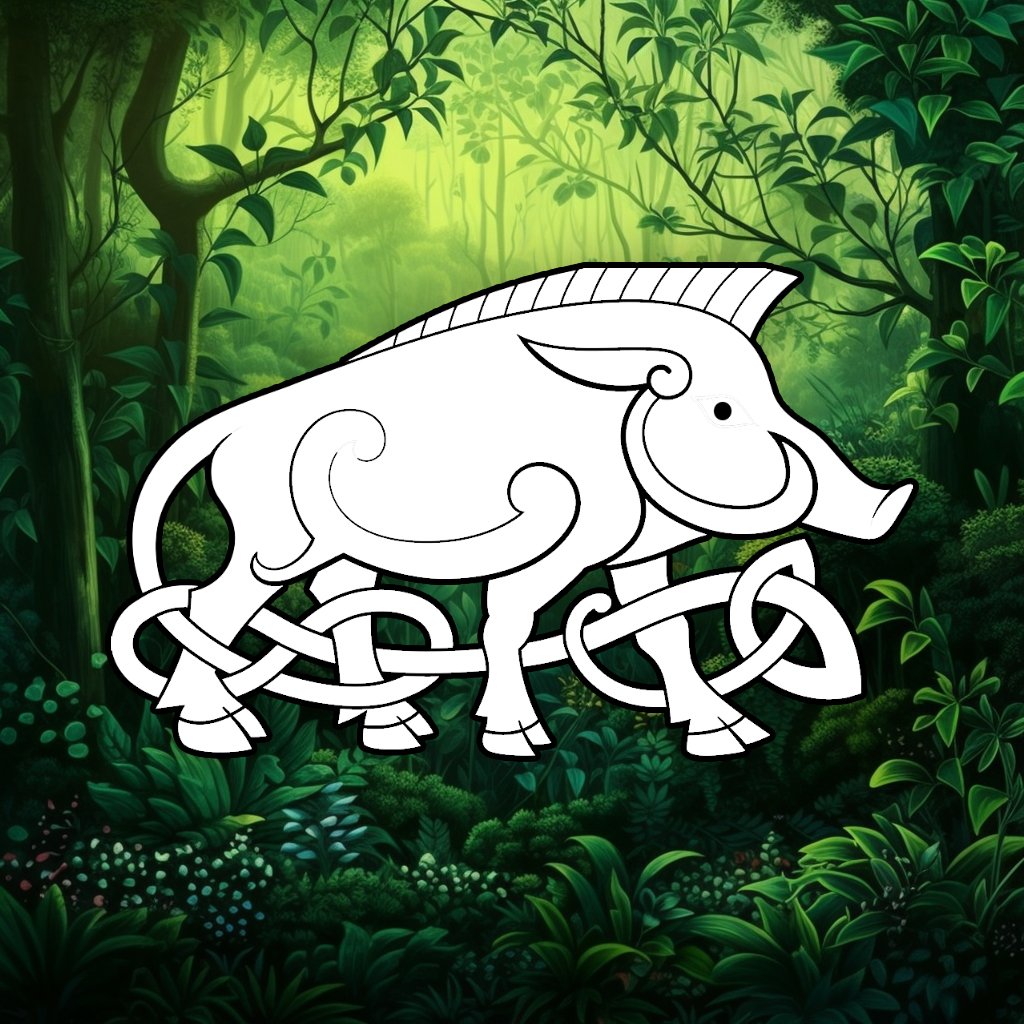
The Boar is a symbol of strength for the Celts. It stands for valor and fierceness, which made it a favorite amongst warriors. The Boar symbol often appeared on warriors’ helmets.
The origins of the boar symbolism in Celtic culture can be traced back to the god Moccus. Moccus is a swine god that was revered as the god of fertility and life.
The boar was one of the most popular animal symbols for the Celts.
